#frontend library
Explore tagged Tumblr posts
Text
Improve Your Frontend Agility with Proven Optimization Methods
Effective Performance Optimization Techniques for Frontend Development

In today’s fast-paced digital landscape, optimizing the performance of front-end applications is crucial for delivering a seamless user experience. Slow-loading websites or sluggish interactions can significantly impact user engagement and conversion rates. In this blog post, we’ll explore a range of effective performance optimization techniques for python front-end development. From optimizing assets to reducing render-blocking resources, we’ll provide practical tips and strategies to help you improve the speed and responsiveness of your frontend applications.
1.Performance Profiling and Analysis:
Understanding the importance of performance profiling and analysis.
Tools and techniques for measuring and benchmarking performance.
Identifying performance bottlenecks and areas for improvement.
2. Efficient Asset Management:
Optimizing and compressing images, CSS, and JavaScript files.
Leveraging browser caching and minification techniques.
Lazy loading and deferring non-critical assets.
3. Code Optimization:
Creating HTML, CSS, and JavaScript code that is both clean and optimized.
Minimizing unnecessary DOM manipulation and avoiding layout thrashing.
Using efficient algorithms and data structures for improved performance.
4. Critical Rendering Path Optimization:
Understanding the concept of the critical rendering path.
Minimizing render-blocking resources.
Optimizing CSS and JavaScript delivery to improve page load time.
5. Responsive Web Design:
Implementing responsive design principles for different screen sizes.
Using adaptive images and media queries.
Optimizing layout and performance for mobile devices.
6. Progressive Web Apps (PWAs):
Leveraging service workers and caching strategies for offline access.
Implementing background sync and push notifications.
Reducing the dependency on network requests for improved performance.
7. Performance Optimization Frameworks and Libraries:
Exploring popular front-end performance optimization tools.
Utilizing performance-focused libraries and frameworks.
Evaluating trade-offs and choosing the right tools for your project.
8. Continuous Performance Monitoring and Optimization:
Setting up performance monitoring tools for ongoing analysis.
Regularly reviewing and optimizing performance based on data.
Keeping up with new performance optimization techniques and trends.
9. Testing and User Experience Optimization:
Conducting performance testing and load testing.
Optimizing perceived performance and user experience.
Gathering user feedback to identify areas for improvement.
10. Minification and Bundling:
Explain the concept of minification and how it reduces file sizes by removing unnecessary characters and whitespace.
Discuss the benefits of bundling multiple files into a single file to minimize HTTP requests.
Mention popular tools and techniques for minification and bundling, such as webpack or Parcel.
11. Optimizing Images:
Discuss the importance of image optimization for reducing page load times.
Explain techniques like compressing images, choosing appropriate image formats (e.g., JPEG, PNG, SVG), and lazy loading.
Highlight tools and libraries that help automate image optimization, such as imagemin or the <picture> element for responsive images.
Caching Strategies
12. Caching Strategies:
Explain the concept of browser caching and its role in improving performance.
Discuss different caching strategies, such as using HTTP cache headers, browser caching, and CDN caching.
Provide examples of implementing caching techniques using tools like service workers or server-side caching.
Code Splitting and Lazy Loading
Advantages:
Improved User Experience: Performance optimizations can lead to faster load times and smoother interactions, providing a better user experience.
Higher Conversion Rates: Faster websites tend to have higher conversion rates as users are more likely to stay engaged and complete desired actions.
Better SEO Rankings: Search engines prioritize websites with faster load times, resulting in improved search engine rankings and visibility.
Increased Mobile Compatibility: Performance optimizations often involve optimizing for mobile devices, making your website more accessible and usable across different devices.
Disadvantages:
Increased Development Complexity: Implementing performance optimizations can add complexity to the development process, requiring additional time and effort.
Compatibility Challenges: Performance optimizations may require specific browser versions or technologies, potentially limiting compatibility with older browsers or devices.
Trade-offs with Design and Functionality: In some cases, performance optimizations may require compromises in terms of design aesthetics or advanced functionality.
Development Constraints: Certain optimization techniques may impose constraints on the development process, such as specific file size limitations or build configurations.
Conclusion:
Recap of the key performance optimization techniques discussed.
The long-term benefits of delivering fast and responsive applications to users.
Summarize the key points discussed in the blog.
Encourage readers to apply optimization techniques in their front-end development projects.
Improving rendering performance was another crucial aspect. We discussed optimizing CSS to reduce file size and minimize unnecessary selectors, as well as employing techniques to optimize JavaScript execution and avoid render-blocking resources.
We recognized the impact of frontend frameworks and libraries on performance and encouraged evaluating their impact on your specific application. Additionally, we emphasized the significance of performance testing and continuous monitoring to detect and address performance regressions.
Originally published by: Effective Performance Optimization Techniques for Frontend Development
#frontend web development#Frontend Developer#Frontend Library#Frontend application development#Frontend technologies
0 notes
Text
Best Frontend Development Frameworks 2025: A Guide to the Top Tools and Trends
Frontend development is evolving rapidly, driven by new frameworks, libraries, and user experience demands. As businesses aim for high-performance web applications, choosing the right frontend framework is crucial. In 2025, developers have a variety of powerful frameworks to build scalable, efficient, and visually appealing applications. This article explores the best frontend development frameworks 2025, analyzing their features, advantages, and use cases.
Additionally, we will highlight essential frontend development tools and libraries that complement these frameworks, helping developers optimize workflows and enhance productivity.
1. Why Choosing the Right Frontend Framework Matters
A frontend framework determines how a web application functions, how it scales, and the user experience it delivers. With technology constantly advancing, developers must stay ahead by adopting frameworks that offer performance optimization, faster development, and seamless integrations.
The right framework should:
Support reusability and modularity for faster development cycles.
Enhance performance and speed, ensuring smooth rendering and interactions.
Offer strong community support and continuous updates.
Be compatible with modern technologies like AI, server-side rendering (SSR), and WebAssembly.
2. Best Frontend Development Frameworks 2025
a) React.js – The Powerhouse Continues
React.js remains one of the most widely used frontend frameworks, thanks to its component-based architecture and vast ecosystem. Backed by Meta (formerly Facebook), React.js continues to evolve with new features enhancing performance and developer experience.
Why Choose React in 2025?
Server Components: React’s server-side rendering (SSR) capabilities make applications load faster.
Concurrent Rendering: The latest React updates optimize page rendering and responsiveness.
Rich Ecosystem: A vast selection of third-party libraries and state management tools like Redux and Recoil.
Best Use Cases
Single Page Applications (SPAs)
E-commerce platforms
Social media applications
b) Vue.js – The Developer-Friendly Framework
Vue.js has gained popularity for its simplicity and flexibility, making it an excellent choice for both small-scale and enterprise applications. Vue 4, expected in 2025, promises even better performance and state management capabilities.
Why Choose Vue.js in 2025?
Lightweight and Fast: Vue’s optimized reactivity system improves rendering speed.
Easy Learning Curve: Developers can quickly adapt to Vue due to its intuitive API.
Improved Composition API: Enhances code reusability and scalability.
Best Use Cases
Progressive Web Applications (PWAs)
Lightweight dashboards and admin panels
Small-to-medium-scale business websites
c) Angular – The Enterprise-Grade Framework
Angular continues to be the go-to choice for enterprise applications. Developed by Google, Angular’s TypeScript-based structure ensures maintainability, security, and scalability. The latest updates in Angular 2025 bring improved performance and a better developer experience.
Why Choose Angular in 2025?
Modular Architecture: Supports large-scale applications with maintainable codebases.
Improved SSR with Angular Universal: Faster page loads for SEO-optimized web apps.
Strong CLI Support: Automates repetitive tasks and enhances developer productivity.
Best Use Cases
Enterprise-grade applications
Banking and financial platforms
Healthcare and government systems
d) Svelte – The Future of Lightweight Web Apps
Svelte is gaining traction as a modern alternative to traditional frameworks. Unlike React or Vue, Svelte compiles components into highly optimized JavaScript, eliminating the need for a virtual DOM.
Why Choose Svelte in 2025?
No Virtual DOM Overhead: Results in faster rendering and better performance.
Smaller Bundle Sizes: Reduces load time and improves page speed.
Reactive State Management: Simplifies handling UI changes without external libraries.
Best Use Cases
Interactive web applications
News and content-heavy websites
High-performance web experiences
e) Next.js – The Leader in Server-Side Rendering (SSR)
Next.js, built on top of React, is redefining frontend development with its powerful server-side rendering capabilities. With the rise of SSR and static site generation (SSG), Next.js remains a top contender in 2025.
Why Choose Next.js in 2025?
Hybrid Rendering: Supports both SSR and SSG for dynamic applications.
Optimized Image Loading: Built-in image optimization enhances site speed.
Edge Computing Support: Deploy apps closer to users for low-latency performance.
Best Use Cases
SEO-friendly websites
Content-heavy platforms like blogs and news websites
E-commerce applications with dynamic content
3. Supporting Frontend Development Tools and Libraries
While frameworks provide the structure for web applications, developers rely on various frontend development tools and libraries to optimize workflows. Some essential tools include:
Webpack: A powerful bundler that optimizes assets and improves page load speeds.
Vite: A next-generation build tool offering faster development and hot module replacement.
Storybook: A UI development environment for building and testing frontend components.
Lodash: A utility library that simplifies JavaScript functions.
These tools help streamline frontend development, ensuring better performance and maintainability.
4. Future Trends in Frontend Development
With rapid advancements in web technologies, here are some key trends shaping the future of frontend development:
a) WebAssembly (WASM) for High-Performance Web Apps
WebAssembly is revolutionizing frontend development by allowing developers to run high-performance code in web browsers, making web applications as fast as native applications.
b) AI-Powered UI/UX Enhancements
AI-driven design tools and automated accessibility testing are becoming integral to frontend development, improving user experience across devices.
c) Headless CMS Integration
More developers are adopting headless CMS platforms like Strapi and Contentful for better content management and scalability.
d) Jamstack Architecture
With a focus on speed and security, Jamstack (JavaScript, APIs, and Markup) continues to rise in popularity for developing static and hybrid applications.
Choosing the right framework is critical for building efficient and future-ready web applications. The best frontend development frameworks 2025—including React.js, Vue.js, Angular, Svelte, and Next.js—offer powerful features that cater to various business and technical needs.
Pairing these frameworks with the right frontend development tools and libraries ensures seamless development, enhanced performance, and optimized user experience. As technology evolves, staying updated with the latest trends and frameworks will help developers build cutting-edge web applications that stand out in the digital landscape.
0 notes
Text
JavaScript Testing Best Practices: Frameworks for Success

Unlock the secrets to successful JavaScript testing with our detailed infographic! From unit testing in JavaScript to the most effective frontend testing frameworks, this visual guide showcases the top JavaScript testing frameworks, libraries, and best practices to ensure robust and efficient test automation.
#JavaScript Testing Frameworks#JavaScript Test Automation#Unit Testing in JavaScript#JavaScript Testing Libraries#Frontend Testing Frameworks#JavaScript Testing Best Practice
0 notes
Text
Top JavaScript Testing Frameworks for 2024: Boost Your Test Automation
Find the best JavaScript testing libraries for 2024. Learn about key frameworks for unit and integration testing, and discover best practices to streamline your testing process.
#JavaScript Testing Frameworks#JavaScript Test Automation#Unit Testing in JavaScript#JavaScript Testing Libraries#Frontend Testing Frameworks#JavaScript Testing Best Practices#JavaScript Integration Testing
0 notes
Text
0 notes
Text
Non-techical people making technical decisions is how you get 6× as many developer hired to write the frontend website code as the number of developers in the entire infrastructure team.
#codeblr#progblr#then when velocity is slow they hire another frontend developer#you know how little you value ux designers?#you should value frontend developers that much#thats how many you need to hire#also value ux more my guy#its actually good if blind people can use your website#even though it makes features come out “slower” and you cant see what changed in the website#your team should comprise of mostly backend developers#i say frontend but technically were “fullstack” developers#my hot take is that “fullstack” is just a fancier word for frontend#we write javascript and just enough of the serverside to call the apis/libraries that the real backend developers write#“Fullstack” “engineer” lmao gimme a break#That said “fullstack senior engineer” is definitely on my resume
1 note
·
View note
Note
Hi there, Love your work! I'm also doing stuff in Unreal and it feels like it's rarer to find other indie devs using it. I love how clean all your UI feels, and UI is something I seem to really struggle with.
Do you have any recommendations for workflows / tips / sources etc for getting better at UI?
Also I'd love to know more about the material / shader workflow for your latest post if you have more information anywhere.
Thanks :)
Hello there! Thank you!! I hope you don't mind me answering publicly as I feel like some people might be interested in the answer!
I really appreciate your UI (User Interface for those not knowing the acronym) compliment as it's something I've spent a long time working on and specializing in, in my career as a software engineer. UI/UX often goes completely unacknowledged or taken for granted even though it takes a lot of time and hard work to create and develop. In the engineering world I frequently had to advocate for and explain user experiences to those who didn't have as deep of an appreciation for UI or a very sophisticated understanding of why a good, visually appealing user experience makes, or on the flip side, can break everything. I think it's a very challenging, overwhelming topic to grasp and communicate, but just by being interested in it you're already way ahead!
There's a lot going on with UI. From visuals to knowing common design elements to successfully conveying a story to the user to implementation to testing to designing for accessibility to animation and I probably didn't cover everything with that run-on sentence. There's frontend engineers out there whose role is solely to maintain and improve UI component libraries for companies. And that's without throwing games, whose UIs are all uniquely visually tailored to their experiences, into the mix... I could keep going on about this honestly, but I'll get to what I think you can do personally! 1. Learn about common design patterns. What's a toast? What's pagination? What's a card? Little things like that. These apply to all software UI/UX, including video games- and knowing these off the top of your head will make it so much easier for you to invent your own UI designs and patterns.
2. Study the UI in the everyday applications you interact with. Step through menus and think about how you got from point A to point B. Take a moment to think about the why someone put a button where they did. Study the UI in your favorite video games, too! Take a lot of notes on what you think works really well and what you think doesn't. And also there's online resources that are great for inspiration. I personally spend a lot of time on the Game UI Database. - https://dribbble.com/ - https://www.gameuidatabase.com/ 3. Don't be afraid to start with basic sketches or even just simply representing everything with grey boxes. All my UI starts out as really crappy sketches on paper, or tablet sketches on top of screenshots. Visualize your ideas and then keep iterating on them until you've got something. For example, I went from this:


To this. (And come to think of it I might actually still want to make those cooler looking buttons in my sketch) 4. Break everything out into pieces and individual components. A good UI is made up of building blocks that you can reuse all over the place. That's how it stays consistent and also saves you a lot of stress when you need to go in and update components. Instead of a million different looking UI pieces, you just have to update the one! These individual components will make up your very own UI Component Library, which will be the standardized design system and source of reusable components for your project. This also applies to your visual elements that don't do anything (like I personally have a whole mini library of diamond and star shapes that I reuse everywhere).
For reference, here's a breakdown I made of my Inventory UI. On the right, I've labeled most of the individual components, and you might be able to see how I'm reusing them over and over again in multiple places.
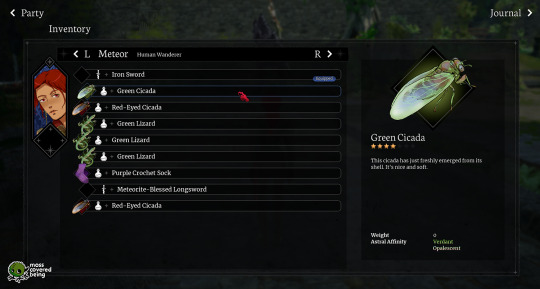
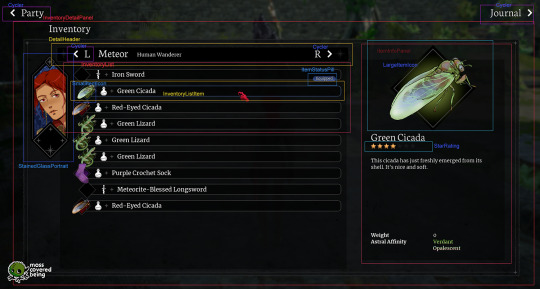
5. Spend some time listening to designers talk, maybe befriend some designers! Many of them have an unique, interesting view of the world and how we interact with it even beyond just software. Their perspectives will inform yours.
6. Test your UI on users whenever you can. Get feedback from others. This is the best way for you to see what works and what doesn't. As game devs we spend so much time with our games it's easy for us to lose sight of the full picture.
7. Be patient and don't give up. Continue to be open to expanding your knowledge. These UI skills take time to develop. I personally am still learning even after like 10 years of doing it. Coming up with the visual elements is very challenging for me and I spend a lot of time rearranging things in photoshop before I actually start coding anything at all in Unreal.
Whew, that was a lot, but I hope that gives you some thoughts and a place to start!
I don't have any posts out there about Blender/Unreal shader workflows right now, but I'll consider making another post sometime soonish. I appreciate you asking and you're welcome! :)
23 notes
·
View notes
Text
React.js for the first time
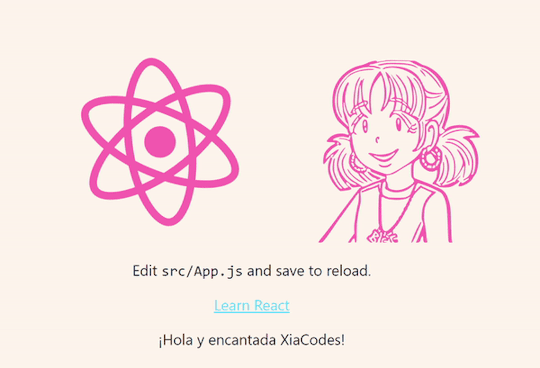
Tuesday 15th August 2023
The title is a lie, this isn't my first time trying React however I was sleeping through the class when the instructors, at the frontend bootcamp I was in, were first teaching the library so no knowledge went in my head however again I did build two projects with react but I look at the code now and I don't know anything (indeed I was a different woman back then) ˙˚ʚ(´◡`)ɞ˚˙
Anyhoo, I am trying out React again and, of course, I already have a couple of project ideas I want to do in React but I don't have the knowledge to build them so I have to sit back and learn the theory~! How fun... (¬з¬)
#codeblr#coding#programming#progblr#studyblr#react#learning react#react.js#programmer#comp sci#computer science#studying
83 notes
·
View notes
Text
The making of the SF family swim map!
This is a technical blog post showcasing a project (swim.joyfulparentingsf.com) made by Double Union members! Written by Ruth Grace Wong.
Emeline (a good friend and fellow DU member) and I love swimming with our kids. The kids love it too, and they always eat really well after swimming! But for a long time we were frustrated about SF Rec & Park's swim schedules. Say today is Wednesday and you want to swim, you have to click on each pool's website and download their PDF schedule to check where and when family swim is available, and the schedules change every few months.
Emeline painstakingly downloaded all the PDFs and manually collated the schedules onto our Joyful Parenting SF blog. The way Rec and Parks structure their schedule assumes that swimmers go to their closest pool, and only need the hours for that particular pool. But we found that this was different from how many families, especially families with young children, research swim times. Often, they have a time where they can go swimming, and they are willing to go to different swimming pools. Often, they’re searching for a place to swim at the last minute. Schedules hence need to allow families to search which pools are open at what time for family swimming. Initially, we extracted family swim times manually from each pool’s pdf schedule and listed them in a blog post. It wasn't particularly user friendly, so she made an interactive map using Felt, where you could select the time period (e.g. Saturday Afternoon) and see which pool offered family swim around that time.
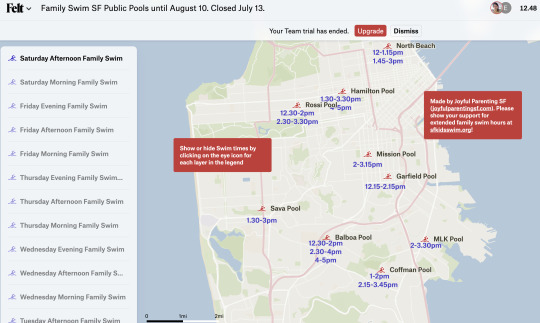
But the schedules change every couple of months, and it got to be too much to be manually updating the map or the blog post. Still, we wanted some way to be able to easily see when and where we could swim with the kids.
Just as we were burning out on manually updating the list, SF Rec & Park released a new Activity Search API, where you can query scheduled activities once their staff have manually entered them into the system. I wrote a Python script to pull Family Swim, and quickly realized that I had to also account for Parent and Child swim (family swim where the parents must be in the water with the kids), and other versions of this such as "Parent / Child Swim". Additionally, the data was not consistent – sometimes the scheduled activities were stored as sub activities, and I had to query the sub activity IDs to find the scheduled times. Finally, some pools (Balboa and Hamilton) have what we call "secret swim", where if the pool is split into a big and small pool, and there is Lap Swim scheduled with nothing else at the same time, the small pool can be used for family swim. So I also pulled all of the lap swim entries for these pools and all other scheduled activities at the pool so I could cross reference and see when secret family swim was available.
We've also seen occasional issues where there is a swim scheduled in the Activity Search, but it's a data entry error and the scheduled swim is not actually available, or there's a Parent Child Swim scheduled during a lap swim (but not all of the lap swims so I can't automatically detect it!) that hasn't been entered into the Activity Search at all. Our friends at SF Kids Swim have been working with SF Rec & Park to advocate for the release of the API, help correct data errors, and ask if there is any opportunity for process improvement.
At the end of the summer, Felt raised their non profit rate from $100 a year to $250 a year. We needed to pay in order to use their API to automatically update the map, but we weren't able to raise enough money to cover the higher rate. Luckily, my husband Robin is a full stack engineer specializing in complex frontends such as maps, and he looked for an open source WebGL map library. MapBox is one very popular option, but he ended up going with MapLibre GL because it had a better open source license. He wrote it in Typescript transpiled with Vite, allowing all the map processing work to happen client-side. All I needed to do was output GeoJSON with my Python script.
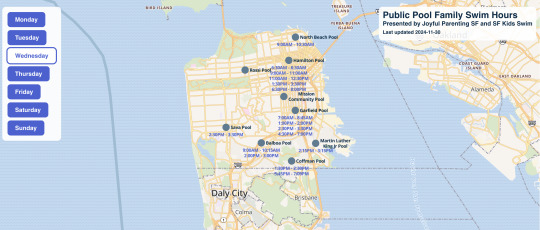
Originally I had been running my script in Replit, but I ended up deciding to switch to Digital Ocean because I wasn't sure how reliably Replit would be able to automatically update the map on a schedule, and I didn't know how stable their pricing would be. My regular server is still running Ubuntu 16, and instead of upgrading it (or trying to get a newer version of Python working on an old server or – god forbid – not using the amazing new Python f strings feature), I decided to spin up a new server on Almalinux 9, which doesn't require as frequent upgrades. I modified my code to automatically push updates into version control and recompile the map when schedule changes were detected, ran it in a daily cron job, and we announced our new map on our blog.
Soon we got a request for it to automatically select the current day of the week, and Robin was able to do it in a jiffy. If you're using it and find an opportunity for improvement, please find me on Twitter at ruthgracewong.
As a working mom, progress on this project was stretched out over nearly half a year. I'm grateful to be able to collaborate with the ever ineffable Emeline, as well as for support from family, friends, and SF Kids Swim. It's super exciting that the swim map is finally out in the world! You can find it at swim.joyfulparentingsf.com.
6 notes
·
View notes
Text
When it comes to building high-performance, scalable, and modern web applications, Node.js continues to stand out as a top choice for developers and businesses alike. It’s not just another backend technology it’s a powerful runtime that transforms the way web apps are developed and experienced.
Whether you're building a real-time chat app, a fast eCommerce platform, or a large-scale enterprise tool, Node.js has the flexibility and speed to meet your needs.
⚡ High Speed – Powered by Google’s V8 engine.
🔁 Non-blocking I/O – Handles multiple requests smoothly.
🌐 JavaScript Everywhere – Frontend + backend in one language.
📦 npm Packages – Huge library for faster development.
📈 Built to Scale – Great for real-time and high-traffic apps.
🤝 Strong Community – Get support, updates, and tools easily.
Your next web app? Make it real-time, responsive, and ridiculously efficient. Make it with Node.js.
#nodejs development company in usa#node js development company#nodejs#top nodejs development company#best web development company in usa
2 notes
·
View notes
Text
Here's some perspective for the people getting fatigued by the constant new-framework hype in the frontend world;
jQuery is still the most-used JavaScript library at 94%.
WordPress still powers 43% of all websites.
You don't have to follow every trend, no matter what anyone says. Just keep using the technology you like to use and try something else if something actually looks better.
44 notes
·
View notes
Text
What is Mern stack And Its importance? Before that I will Tell you the best institute for Mern stack course in Chandigarh.

What is Mern stack?
MERN Stack is a popular JavaScript-based technology stack used for building full-stack web applications. It consists of four key technologies:
MongoDB: A NoSQL database that stores data in a flexible, JSON-like format.
Express.js: A lightweight and fast backend framework for Node.js.
React.js: A front-end JavaScript library for building user interfaces.
Node.js: A runtime environment that allows JavaScript to run on the server side.
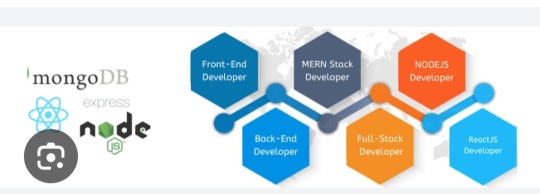
Importance of Mern Stack :
Full-Stack JavaScript – Uses JavaScript for frontend and backend, simplifying development.
High Performance – Node.js ensures fast, scalable applications.
Cost-Effective – Open-source, reducing development costs.
Rapid Development – React’s reusable components speed up UI building.
Flexibility – Suitable for web apps, SPAs, eCommerce, and real-time applications.
Scalability – MongoDB handles large data efficiently.
Strong Community Support – Large developer base ensures continuous updates and support.
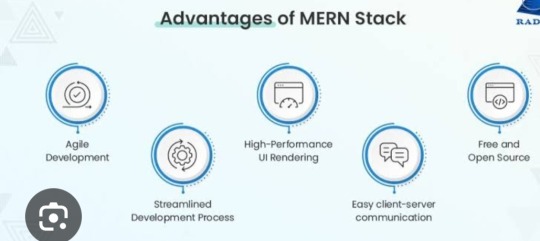
Now i will tell you the best institute for Mern stack course in Chandigarh .
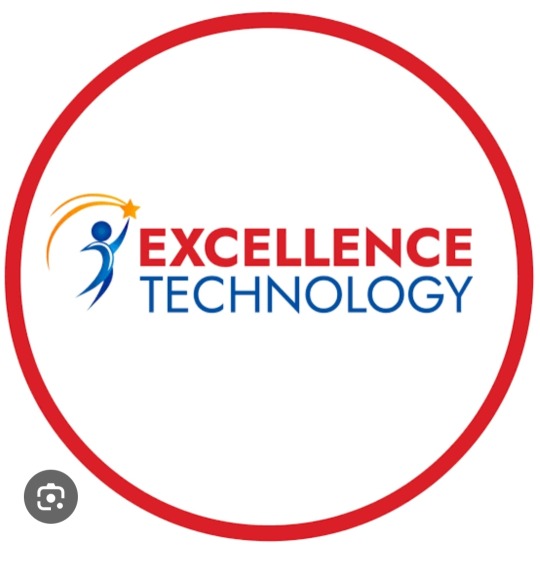
Excellence Technology is a leading EdTech (Educational technology) company dedicated to empowering individuals with cutting -edge IT skills and bridging the gap between education and industry demands. Specializing in IT training ,carrer development, and placement assistance ,the company equipts learners with the technical expertise and practical experience needed to thrive in today's competitive tech landscape. We provide IT courses like python ,Full stack Development, Web Design ,Graphic Design and Digital Marketing.
Contact Us for more details: 93177-88822
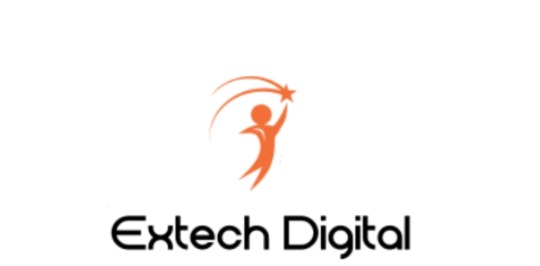
Extech Digital is a leading software development company dedicated to empowering individuals with cutting -edge IT skills and bridging the gap between education and industry demands. Specializing in IT training ,carrer development, and placement assistance ,the company equipt learners with the technical expertise and practical experience needed to thrive in today's competitive tech landscape. e provide IT courses like Python ,Full stack Development, Web Design ,Graphic Design and Digital Marketing.
Contact Us for more details: 93177-88822

Excellence academy is a leading software development company dedicated to empowering individual with cutting edge IT skills and bridging the gap between education and industry demands.specializing in IT training, career development, and placement assistance, the company equits learners with the technical expertise and practical experience needed to thrive in today's landscape. We provide IT courses like python, full stack development,Web design, and Digital marketing.
Contact Us for more details: 93177-88822
About Author
Nikita Thakur
Mern stack AI Developer/ 2+ years of experience
Excellence technology
Professional summary
Nikita thakur is a skilled MERN Stack AI Developer with over 2 years of experience at Excellence Technology. Proficient in MongoDB, Express.js, React.js, and Node.js, she integrates AI solutions to build scalable, high-performance web applications. Nikita excels in developing innovative solutions, enhancing user experiences, and driving business growth through technology.
2 notes
·
View notes
Text
27/02/2024 || Day 17 (dop)
TLDR:
🔸 practised ASL fingerspelling
🔸 worked on final results functionality for Frontend Mentor project
🔸 sketched a page in my sketchbook

------------------------------------------------------------------------------
Work
Even though I'm not working much this week, I picked up some volunteering shifts for an event being held in my city this week, so it'll be a slow week in terms of programming. Yesterday was set-up day and today my body hurts from that (and my work shifts involving lifting heavy boxes too).
Frontend Mentor - So...I think I finished the functionality for this project today...? I'm convinced this it the ugliest code I've ever written, but hey, it works! And it's a small enough project that it's not the end of the world. There was a lot of internal debating on whether or not I wanted hard-code certain parts or ensure that it'll be scale-able/is dynamic, but again, because it is a smaller project I didn't feel too bad to hard-code some aspects. And for the rest of the week, I'm gonna suffer while making this responsive.
Art - I gotta say, my hard work at sketching horses for many pages last year has paid off, because I've been re-watching Bojack Horseman and I can draw him in my style without him looking weird. Hooray! I also got some more graphic novels from the library, so hopefully my art inspiration and art motivation will continue, because I'm having a lot of fun doing art again. It's a shame there are no good artist spaces online to share it.
11 notes
·
View notes
Text

Upgrade your JavaScript test automation with the latest frameworks. Learn about the most effective libraries for unit and integration testing, and follow best practices for superior results. #JavaScriptTestAutomation #UnitTestingInJavaScript #JavaScriptTestingLibraries
#JavaScript Testing Frameworks#JavaScript Test Automation#Unit Testing in JavaScript#JavaScript Testing Libraries#Frontend Testing Frameworks#JavaScript Testing Best Practices#JavaScript Integration Testing
0 notes
Text
My Journey to Becoming a Frontend Developer
In today’s fast paced digital world, frontend development has become the cornerstone of delivering exceptional user experiences. From seamless web app navigation to visually stunning interfaces, a frontend developer brings ideas to life.
Why I Want to Be a Frontend Developer and How HNG Will Help Me Achieve My Goals
My journey to becoming a frontend developer is fueled by a passion for creativity, problem solving, and the desire to create applications that users love. Joining HNG internship bootcamp as a frontend developer is the perfect opportunity to sharpen my skills and gain hands on experience while contributing to real world applications.
My Motivation for Becoming a Frontend Developer
Ever since I first interacted with web technologies, I’ve been fascinated by the magic of turning code into functional and beautiful interfaces. It’s amazing how a few lines of HTML, CSS, and JavaScript can create immersive websites and applications that millions of people rely on daily.
Another reason I gravitate toward frontend development is its user centric nature. I love the idea of creating intuitive and visually appealing designs that make people’s lives easier. I’m driven by the opportunity to make technology accessible and enjoyable for everyone.
How HNG Will Help Me Grow in the Field
The HNG internship bootcamp is a game changer for aspiring developers like me. One of the most significant challenges in the tech world is bridging the gap between theoretical knowledge and real world application. HNG provides the perfect platform to tackle this by immersing participants in a fast paced, project driven environment.
Here’s how I believe HNG will accelerate my growth:
Hands On Experience: HNG’s focus on building real life applications aligns perfectly with my goal to learn by doing. By collaborating with a team to tackle real world challenges, I will develop technical skills that can’t be learned in isolation.
Mentorship and Guidance: HNG’s experienced mentors will provide valuable insights and feedback, helping me refine my coding skills, improve my design thinking, and understand industry best practices.
Exposure to Modern Tools and Frameworks: The bootcamp emphasizes modern frontend technologies. This aligns with my goal of mastering the tools that drive innovation in the industry.
Networking Opportunities: Being part of a vibrant community of like minded developers and industry experts at HNG will expand my professional network and open doors for future opportunities.
My Goals for the Internship and How I Plan to Achieve Them
During my time at HNG, my primary goal is to become a finalist in the frontend track and I plan to achieve this through other key goals such as:
Master Frontend Fundamentals: I aim to strengthen my knowledge of HTML, CSS, JavaScript, and popular libraries like React. I plan to achieve this by actively participating in all coding sessions and tasks, seeking feedback, and consistently practicing.
Contribute to Real World Projects: One of my key goals is to contribute meaningfully to the applications we build at HNG. By collaborating with team mates, meeting deadlines, and embracing challenges, I hope to add value to every project as I move up the ladder.
Enhance Problem Solving Skills: Frontend development often involves debugging and optimizing code. I will approach every challenge as an opportunity to learn and improve my critical thinking.
Develop a Strong Portfolio: By the end of the internship, I want to have a portfolio showcasing my contributions to real world applications, demonstrating my skills to potential employers that require the service of an experienced JavaScript and React developer.
Conclusion
Becoming a frontend developer is not just a career choice for me, it’s a passion that aligns with my creative and technical interests. The HNG internship bootcamp provides a unique opportunity to accelerate my growth, gain hands on experience, and prepare for the dynamic world of frontend development. With a clear vision of my goals and a commitment to learning, I’m excited to embark on this journey and make the most of this incredible opportunity at HNG.
3 notes
·
View notes
Text
Hey all, if any of you know someone looking for a Backend Dev, I got laid off. I'm good with Groovy and SpringBoot and can learn pretty much any environment. I have passing familiarity with Ruby on Rails and Django, and most kinds of commonly used databases.
In the past I've been a Frontend Dev as well. Primarily focused on Bootstrap, Next.JS, and React, using standard HTML/JS/CSS stack.
I've been learning GameBoy programming in my free time and finding a joy in Small Device programming that might extend well to a junior embedded systems job.
I've worked on major systems used by colleges and libraries, and I've worked on a scheduling system with ~500 medical facilities as their customers.
You might have seen my posts about Computer Science. If they seem like they might be relevant to someone's needs and you're willing to act as a recommendation for me, please reach out.
#I normally wouldn't do this but its an emergency#by the way your company probably has a financial incentive for playing the role of recruiter
5 notes
·
View notes